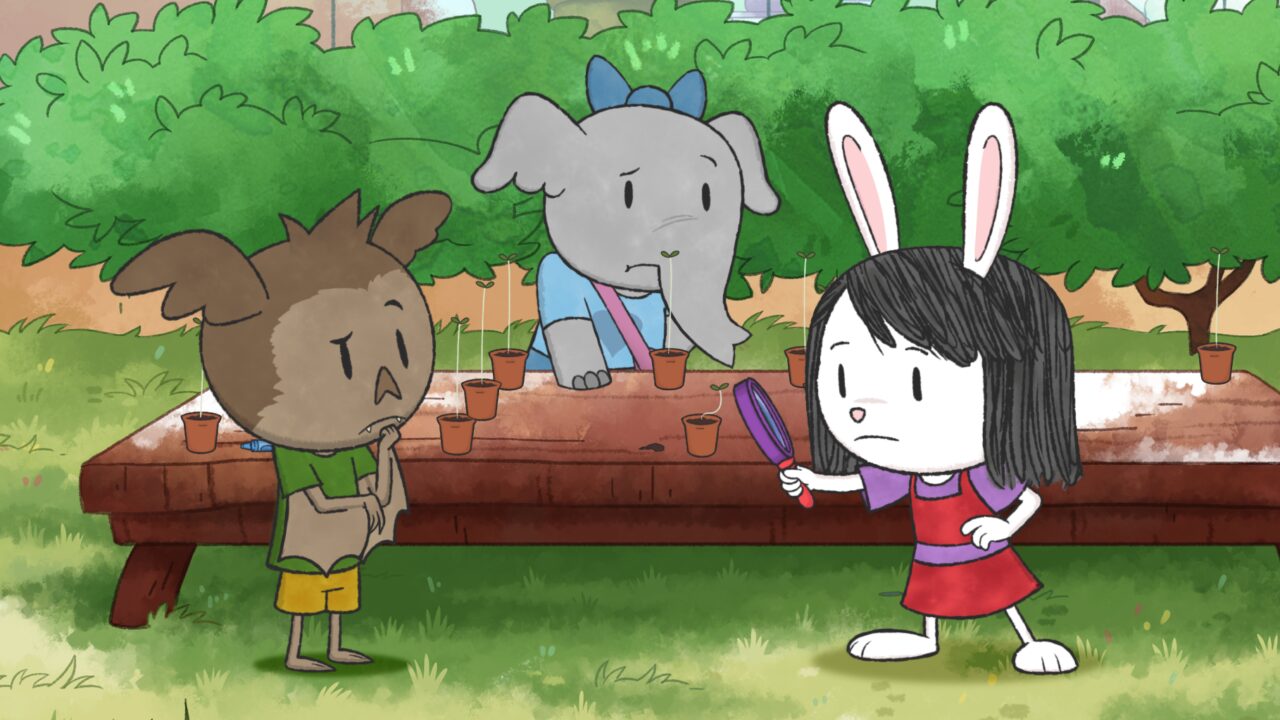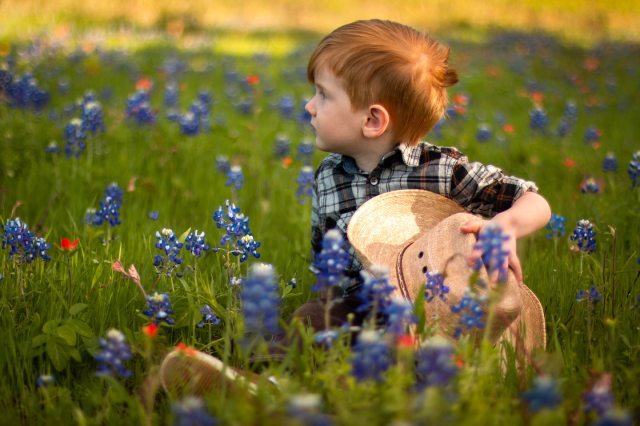
On the new series Elinor Wonders Why, observant bunny rabbit Elinor and her young friends indulge their curiosity about how the world works, learning basic scientific skills to answer their own questions about science, nature, and life in general.
My young daughter loves going on nature walks to examine and collect flowers to make “tea” for her dolls. These jaunts around the neighborhood are often her favorite part of the day. (And mine, too!) In fact, preschoolers are naturally curious, and getting outside with them and exploring nature is a perfect way to learn about science and how to question in an age-appropriate way. In fact, exploring nature has myriad benefits, says pediatric neuropsychologist Dr. Jennifer Katzenstein of the Johns Hopkins Center for Behavioral Health.
“Research suggests that more outdoor time is protective for children’s mental health, and allowing children the opportunity to physically explore their outdoor environment, while also engaging them in an understanding of nature and our outdoor world, helps build confidence and cognitive skills,” says Dr. Katzenstein. Bonus: It also gets them physically moving, which can help reduce anxiety and improve sleep. (More sleep at this age is always a win, both for children and tired parents!)
Here are six great ways to explore nature with your preschooler:
1. Make it a habit to go outside.
Whether observing how ants cooperate to build nests or how leaves and feathers each fall softly, Elinor is always outside observing nature. Young children not only love the outdoors but also thrive on routine, so by making outdoor play a regular part of your daily habits, they’ll learn to eagerly anticipate the exploration time.
“Outdoor play may provide unique opportunities for children to observe and engage with diverse objects, which may facilitate learning,” says Daniel Bagner, Psychology Professor at Florida International University’s Center for Children and Families. “For example, if a child throws a rock in a pond, they may learn about density.”
Especially these days, after months of many young children sheltering in place and barely leaving their homes, it’s important—both physically and mentally—for young kids to have outdoor time whenever possible. Consider setting aside dedicated time every day—say, after lunch, or before the nightly bath—to regularly get outside together and explore.
2. Ask questions and encourage questions.
In the eyes of a young child, everything is new and exciting, so asking gentle questions can not only lead to creativity breakthroughs but can also cause them to ponder new questions. And, after all, sometimes the simplest questions can lead to the most profound answers and are wonderful learning opportunities for your children.
When Elinor’s dad is having trouble sleeping in because of loud birds just outside his window, Elinor wonders why birds sing. She eventually realizes that birds sing to communicate, just as humans talk to communicate—and by questioning, Elinor is able to understand how animals get their vital needs met.
3. Draw in a nature journal.
For children, the world is full of wonder and designed to be explored—ideally hands-on. You don’t need to venture far: even the backyard, neighborhood sidewalk, or local park is fertile ground for a young imagination. Elinor has incredible powers of observation, examining everything from how flowers attract bees through color and smell, to the way spittle bugs use their bodies like straws to blow small bubbles.
Encourage your own children’s powers of observation with a nature journal. Ask them to draw what they see: everything from parts of a plant trees to different body parts of animals is fodder for creativity and imaginative learning.
Take it to the next level by creating multimedia projects, such as gluing or taping leaves and flowers collected on walks to your children’s drawings. Other ideas: make leaf rubbings, create poems together about what you’ve seen, or outline seeds and rocks collected on the neighborhood journey.
4. Use field guides to help identify and learn about what you discover.
While observing butterflies and caterpillars, Elinor and her friends realize they’ve never seen a baby butterfly—and eventually learn that caterpillars themselves are baby butterflies! If your children seem interested in a certain aspect of nature—whether plants, birds, or bugs—you can create a field guide together. Identify all the regular specimens you come into contact with and go into detail about their parts.
Once you’re done creating your guide, take it and set off together on a scavenger hunt to locate all the varietals. Your children will be proud and have a sense of accomplishment when they check all the boxes and complete the nature quest.
Another possibility: encourage them to keep notebooks—just like Olive—writing (or drawing, if they’re too young!) observations about what they find.
5. Get a closer look at features on plants, natural objects, and animals.
It can be easy to let nature pass you by and not notice the intricate details. Go on a nature walk with your kids, like in Elinor’s Nature Adventure game, and encourage your children to take careful note of what they see.
By connecting what they observe in nature to how the world at large works, children will learn that scientific practices can be used anywhere to build knowledge as their curiosity is engaged.
After all, as Elinor always says, “We need more observations!”
6. Dig deeper.
Can’t remember why leaves are green? Don’t worry if you don’t have the answer. Just like in Elinor, while it is important to be helpful and responsive, it’s not necessary to be an encyclopedia. Elinor’s parents and the other adults in Elinor Wonders Why may not always know the answers, but they do always gently guide Elinor and her friends to figure out things for themselves. The most important thing is encouraging further questioning.
Consider answering your child’s question in an open-ended way by saying, “I’m not sure. How can we figure that out?” Parents can also ask children whether it’s a question they should look up or if it can be investigated out in the world.
—By Nadine Jolie Courtney
RELATED STORIES:
“We Can Do Hard Things:” Building Resilience in Kids
feature image: Phinehas Adams via Unsplash
